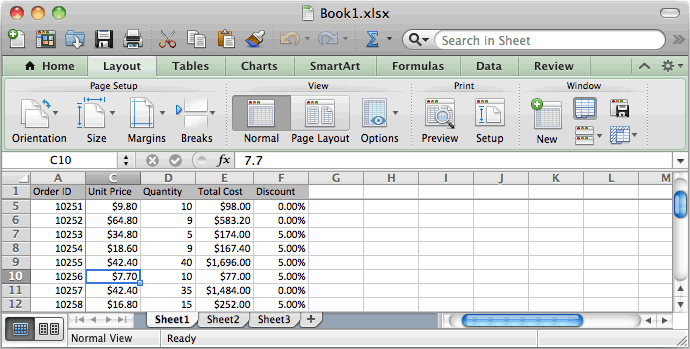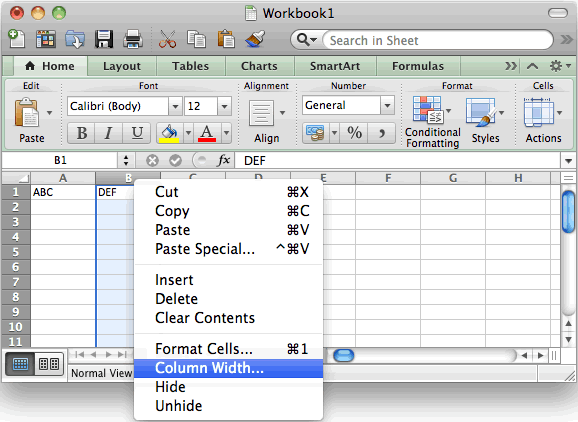

Several different aspects of your page layout may be altered to customize the way your printed worksheet appears. In order to fit information on a page or change the appearance of a page, you may want to customize your page layout. This article is based on legacy software.
#Change , for . in excel in mac mac
The punctuation in numbers (for example, the decimal point and thousands separator) does change.(Archives) Microsoft Excel 2007: Customizing Page Layout Mac For existing table and chart data, the language in dates (for example, month names) changes, but the punctuation in dates and the order of the day, month, and year don’t change. But if you share the spreadsheet, all users see the spreadsheet in the language and region of your computer.Īfter you change the spreadsheet’s language and region, any new table and chart data you enter reflects the new language.

If you subsequently change your computer’s language setting, or if you open the spreadsheet on a computer with a different language setting, the spreadsheet’s language and region automatically change to match the computer’s. If you choose the first item in the Language pop-up menu (System - ), you reset the spreadsheet to the language and region of your computer. In the dialog that appears, click the pop-up menus and choose a language and a region. Note: You can’t change this setting for a shared spreadsheet.Ĭhoose File > Advanced > Language & Region (from the File menu at the top of your screen.) To see examples of the formatting differences, click the language in the message. When you view a spreadsheet that uses a language and formatting different from your computer’s, a message near the bottom of the spreadsheet indicates which formatting is used. When you choose a new language, the template titles and text and some formatting controls change to reflect that language. Open Numbers, then hold down the Option key and choose File > New (from the File menu at the top of your screen).Ĭlick the Language pop-up menu in the bottom-left corner of the template chooser, then choose another language.ĭouble-click the template you want to use. This language setting affects only the current spreadsheet. You might want to do this if you plan to share the spreadsheet with someone in another region.įor example, some regions use commas instead of periods to indicate decimal points, or different monetary symbols for currency, or they display numbers from right to left instead of left to right. When you create a new spreadsheet, you can automatically format numbers, dates, times, and currency in tables and charts using the formatting conventions of a specific language and region. For example, if you switch the input source from English to Hebrew, the insertion point moves to the right side of the spreadsheet. If you switch to a language written in a direction different from the current language, the insertion point moves to the side of the spreadsheet used by the new language. To switch to the other keyboard, click the Input menu on the right side of the menu bar, then choose a keyboard. If Numbers is open, quit Numbers and reopen it so that it recognizes the source. Select the checkbox next to “Show Input menu in menu bar.”įor more information about input sources, click Help in the menu at the top of your screen, then search for “input sources.” On your Mac, choose Apple menu > System Preferences > Keyboard > Input Sources.Ĭlick at the bottom of the left column, choose the keyboard you want to use, then click Add. When you add a language-specific keyboard to your device, that language is also added to your device’s preferred language list.

To use another language in your spreadsheet, first set up an input source (for example, a language-specific keyboard or character palette) for the language.


 0 kommentar(er)
0 kommentar(er)
